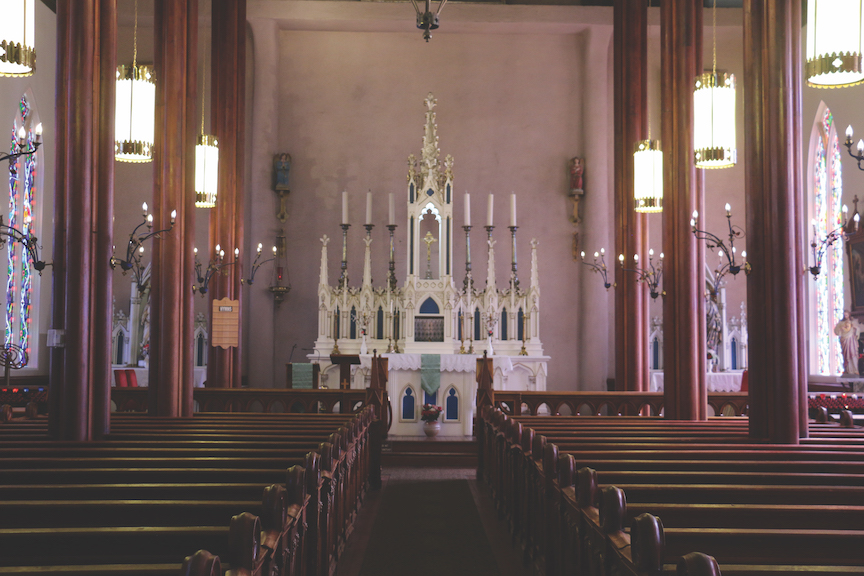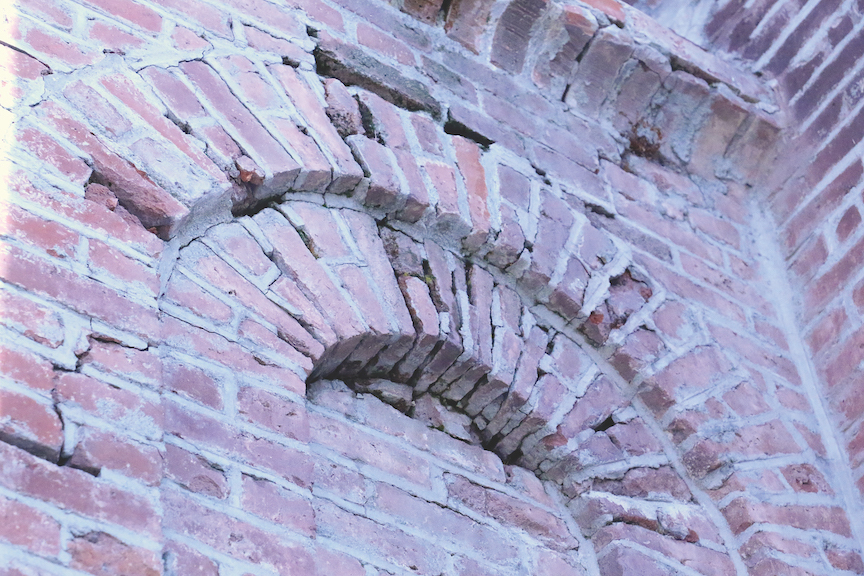Virginia City’s St. Mary in the Mountains is Nevada’s oldest active Catholic church and oversees the Comstock from 111 S. E St. Jessica Garcia/Nevada Appeal
Cracks in the brick exterior of Virginia City’s St. Mary in the Mountains Catholic Church are widening. The original stone lining the building easily breaks off after annual flooding and snowmelt.
The interior shows discoloration caused by leaks and water pools in the sanctuary. St. Mary is need of major restoration work but there are few experts in historic masonry available to help.
Tim Roth, caretaker of the church at 111 S. E St., began as its gift shop manager about 13 years ago.
“It's a special place,” Roth said. “It affects people. I get people coming in here and they leave in tears because this place has done something spiritually drawn. I get people that only come up once a year from San Francisco because they want to see the church.”
SURVIVING FIRE
Father Patrick Manogue, an Irish emigrant and gold miner turned priest in the early 1850s, arrived in Virginia City within the next decade, but his new home had no church. The first St. Mary in the Mountain’s building, identical to what exists today, was completed and dedicated.
On Oct. 26, 1875, an early morning fire broke out after a coal oil lamp was knocked over and spread quickly, destroying much of the town. While frequently reported that the church had burned down, Roth said attempts were made to blow the roof off and preserve at least some of the original structure. The St. Mary that exists now was rebuilt with some of the original walls and pillars on the original foundation. The 150th anniversary of the Great Fire will be in October.
The Roman Catholic parish operates under the Diocese of Reno. St. Mary observes Sunday and Wednesday mass and features a museum and gift shop.
 Jessica Garcia/Nevada Appeal
Jessica Garcia/Nevada AppealRESTORATION NEEDING RESTORATION
Approximately 18 years ago, restoration efforts were made to the church structure, according to Jacob Arndt, owner of Northwestern Masonry and Stone from Lake Mills, Wisconsin.
Arndt frequently visits Northern Nevada and is familiar with the church. He has provided his masonry expertise to assess the building’s current state.
“The iconic church silhouette on the skyline of Virginia City for a century and a half needs emergency repairs just 18 years after major ‘restoration’ work took place,” Arndt told the Appeal.
Even before the work in the early 2000s, a previous attempt to preserve the exterior brickwork used incorrect mortar. A seismic retrofit was needed to withstand earthquakes.
The most recent attempts to repair the church’s foundation failed. The mortar batch became a significant problem in the restoration process, Arndt said.
“Once that mortar batch is wrong, it’s just causing a situation where any sort of movement is bracing the brick, and the only way is to retuck and grind all of those joints and get the right batch out,” he said.
Standard cement can’t be applied to historic buildings like St. Mary. Stopping leaks in the brick or cracks in the foundation requires a type of natural hydraulic line to allow moisture to escape and for some movement to keep damage from occurring, Arndt said.
Modern materials, including soft brick and hard Portland cement mortar that are more brittle, become a “sure recipe for disaster,” he said.
“Unfortunately the contractor used materials and methods designed for new construction on vintage masonry and timber frame construction, a practice all too often used in our American architectural profession which only accelerates damage rather than remedy, at a prodigious cost to the building’s owners,” he said.
Over time, water has ravaged brick and stone. Roth has had to collect salvageable pieces and throw away replacement materials that have broken or damaged the structure.
“It freezes and it starts splitting over, so what I do is I throw away all the stuff that (the contractors) put on and all the original stones that are popping up that were built for the church,” Roth said. “I have put aside and marked where they went so when we finally find somebody who knows what they're doing, they can put everything back on again.”
 Jessica Garcia/Nevada Appeal
Jessica Garcia/Nevada AppealHISTORIC MASONRY KNOWLEDGE WANING
It takes expertise in historic masonry to maintain structures built in the 19th century or earlier, Arndt said. Few companies can use modern construction materials and techniques to repair older properties.
“We can’t put a finger on anyone, but there are damn few as I travel and do consultation just about everywhere,” Arndt said. “It’s an endemic problem here.”
Arndt apprenticed with his grandfather and studied history at the University of Wisconsin in Madison. Working to preserve older structures is a “gold mine” for specialists in masonry, brick and stone restoration.
“That’s where the artwork is,” he said of his profession.
“It’s a trade issue for me because I’ve seen it through all my career only because we do not adhere to regular standards for historic preservation,” Arndt said. “They’re on the books but nobody enforces them or even looks at them.”
SAVING ST. MARY
“We have a lot of dedicated people who care about the church and do what they can to volunteer and help out,” Roth said.
Donations can be made by contacting the church or visiting its website at stmarysvc.org. Roth said general fund revenues, if not designated, often are used for heating the building. If designated for restoration, money will be used on the church’s structural needs.
“I get a lot of people who say, ‘No, we've never ventured off of C Street,’ and then they start going off, ‘We've seen the church, but we've never walked into it,’ and they don't realize what they were missing, the beauty of the inside of it,” he said.